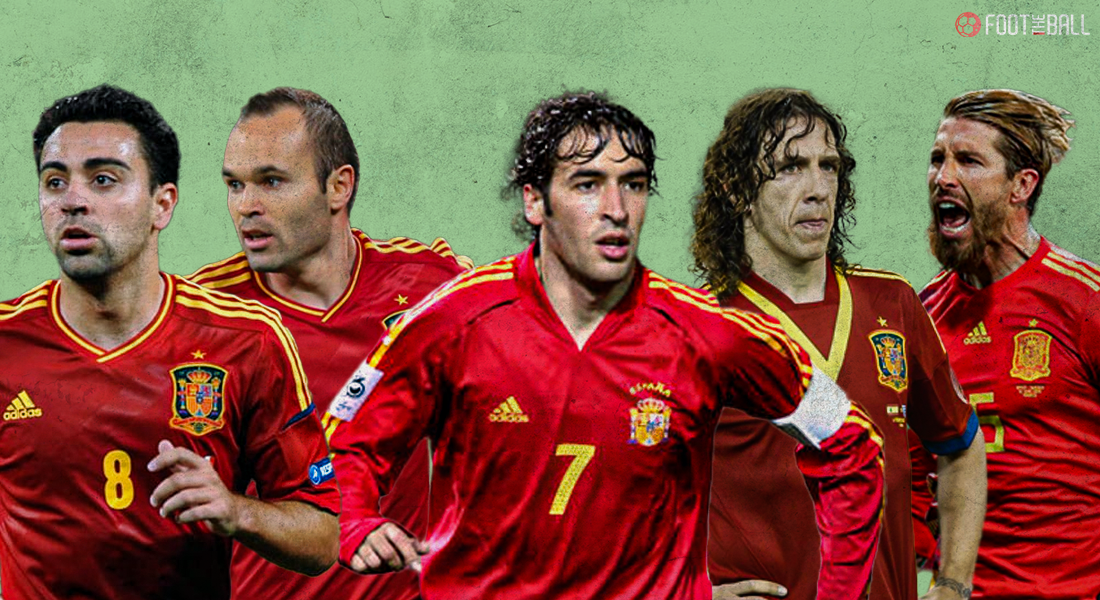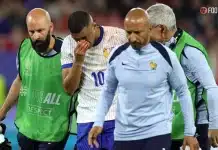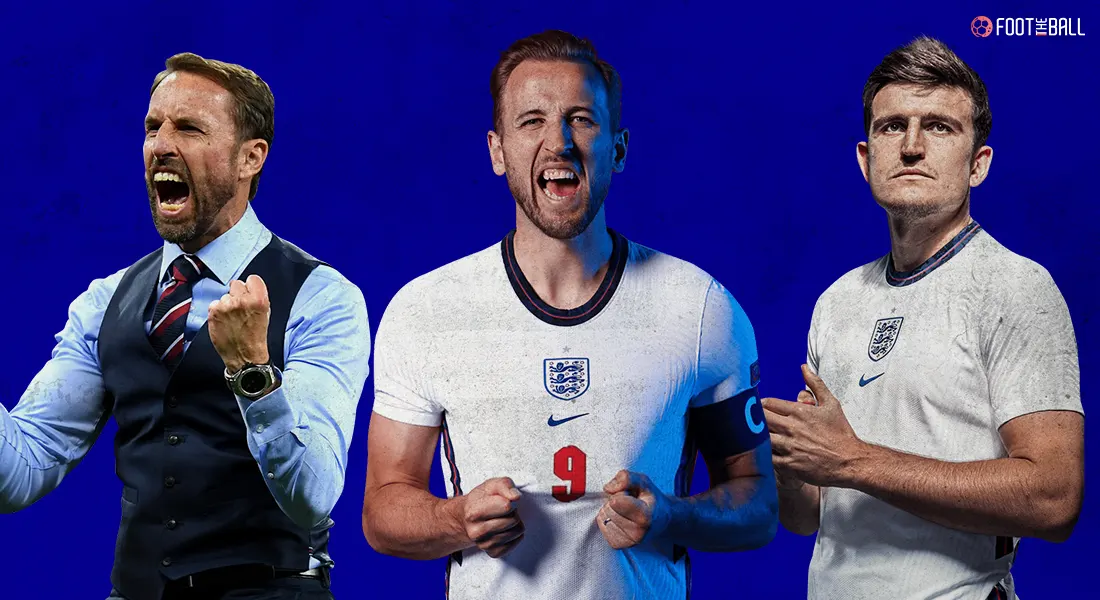Identity is seen at the core of any greatly performing team and the achievements of international football sides are highlighted by a distinctive way of playing the game and for Spain, it is that of being a possession heavy side and playing the opponent out of the park, with one main objective – to win.
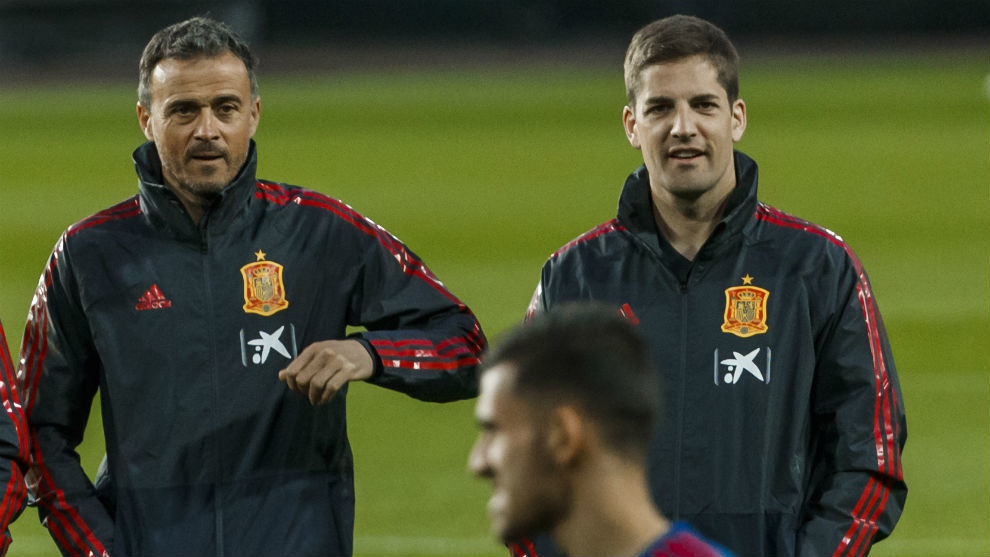 Spain, under Luis Enrique will look to get back its identity of the glory days of 2008-12. (Image Courtesy: Marca / Website)
Spain, under Luis Enrique will look to get back its identity of the glory days of 2008-12. (Image Courtesy: Marca / Website)
The golden generation that won everything that was available for a national side between 2008 to 2012 was heavily influenced by the play style of Pep Guardiola’s Barcelona in the same era who in turn developed their ‘tiki-taka style from Johan Cruyff’s version of Total Football in the 1990s.
INFLUENCE OF JOHAN CRUYFF
As a player, Cruyff was already influential in his own right, inspiring players to take up that position of second striker/attacking midfielder and this was evident in his three consecutive European Cup victories with Ajax in 1970s and a World Cup final with Netherlands in 1974.
But it was as the manager of Ajax and later, Barcelona that he had truly influenced the game of football to new levels, with an unwavering commitment to an attacking brand of football, while keeping it artistically beautiful.
Based on his former coach Rinus Michel’s Total Football, which literally meant that any outfield player can play in any position, Cruyff created his own version by including a possession heavy ideology while also retaining Michel’s idea of the swapping of positions and the use of the entire pitch.
At Barcelona, Cruyff employed a system that believed that the best way to guarantee victory was with an offensive style of play through which his teams would do everything imaginable to control every game they played.
Only keeping possession of the ball did not interest Cruyff. He wanted his players to understand that, in order to keep it and move towards the opponents’ goal, the ball had to be moved and moved and moved.
This was the key to creating imbalances in the opposition shape and creating the spaces that would allow them to penetrate into dangerous areas.
 Cruyff, as the manager of Barcelona in 1992. (Image Courtesy: FC Barcelona / Website)
Cruyff, as the manager of Barcelona in 1992. (Image Courtesy: FC Barcelona / Website)
While doing the same, he wanted his team to maintain a compact block. This would allow continuous exchanging of positions and enable easier and faster reorganizations when possession was lost. And the closer together they were, the easier it would be to regain the ball, even in the opposition half.
To envisage all of the above, Cruyff predominantly relied on two tactical formations in different phases – the 3-4-3 diamond while in possession and the 4-3-3 out of possession.
In possession, the players would form into a mould such that each player, regardless of his location on the pitch, had to position himself to form the shape of a triangle. This was considered an ideal basis from which his team could keep the ball, while always offering the ball-carrier a minimum of two passing options.
 How Barcelona lined up when in possession under Cruyff
How Barcelona lined up when in possession under Cruyff
The majority of the time, the full-backs used to push further forward to either help in the attack as the two wingers would tuck in as inside forward, or either help the central midfielders to overload the midfield and gain control of the game.
This system also saw the return of the ‘false-nine’, which was donned by arguably Denmark finest player, Michael Laudrup.
More often than not, Laudrup used to fall back from his centre-forward role to create an overload in the middle of the pitch and allow Hristo Stoichkov and Andoni Goikoetxea to move into the central areas in the final third, disturbing the opposition’s structure and running havoc.
Defensively, Cruyff idea was to defend by an attack. The 3-4-3 diamond would become a 4-3-3, as Guardiola would drop back into the role of a centre-back alongside Ronald Koeman, while Jose Bakero would come deeper to assist Txiki Begiristain and Eusebio in the midfield.
 How Barcelona lined up defensively under Cruyff
How Barcelona lined up defensively under Cruyff
The Dutchman’s defensive strategy as a whole was on the basis of the positioning of the players rather than any physical strength. He believed that the correct positioning of his players would allow for more effective, prolonged possession, less of losing the ball and then quick recovery if possession was lost.
It is not only through Guardiola that Cruyff’s legacy endured at Barcelona.
Today, Johan Cruyff would’ve been 73.
Without Johan Cruyff, the beautiful football we enjoy to watch #ManCity play today, would not have been possible.
Pep: "Without him I wouldn’t be here. I know for sure this is why I am, right now, the manager of Manchester City." pic.twitter.com/B3xQr8vInH
— City Report (@cityreport_) April 25, 2020
Other Dutch managers such as Louis Van Gaal and Frank Rijkaard continued the Cruyff style of play at the Catalan but none like the diminutive Spaniard, who, with the teaching he received while playing under the master itself, had gone onto revolutionize the identity of modern football that was a base for the Spain national team in that era.
SPAIN AND ITS IDENTITY
The roots for the infamous ‘Tiki-Taka’ were from the ideology of Johan Cruyff and it was simultaneously perfected by then national team coaches Luis Aragones and Vincente Del Bosque and at Barcelona by Cruyff’s protégé, Pep Guardiola.
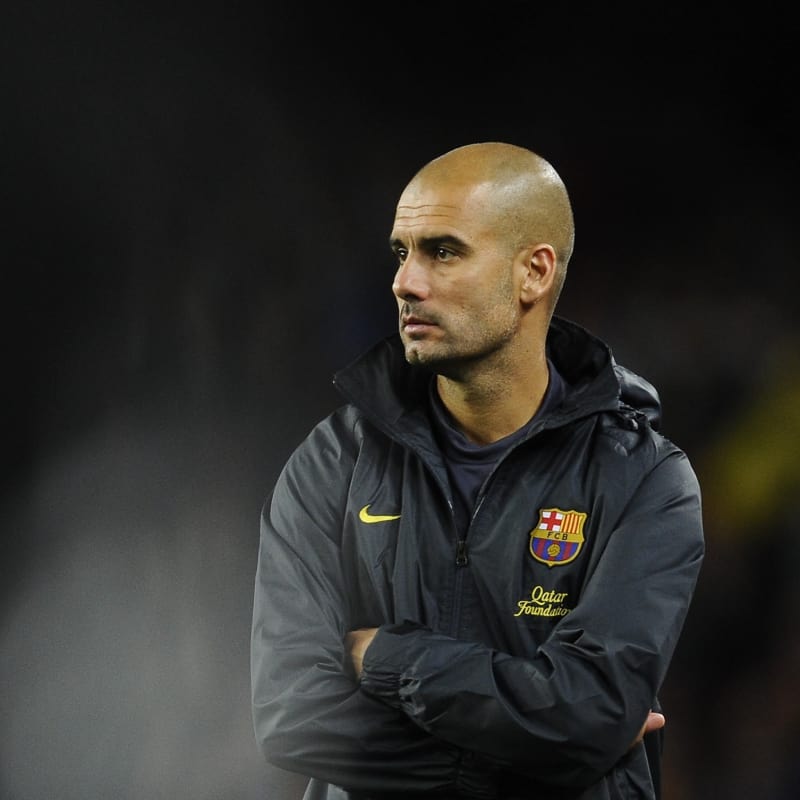 Guardiola, as the manager of Barcelona in 2010. (Image Courtesy: FC Barcelona / Website)
Guardiola, as the manager of Barcelona in 2010. (Image Courtesy: FC Barcelona / Website)
The failure at the World Cup in 2006, which was predominantly due to the team not being physical enough to outmuscle the opponents, led to the radical introduction of the Tiki-Taka system by Aragones at the Euros two years later, based on the ideology of short passing and movement, working the ball through various channels, and maintaining possession.
In Catalonia, Guardiola went ahead and took the system into newer extremes, partly due to his coaching but also being helped with having exceptionally gifted players such as Andres Iniesta, Xavi, Sergio Busquets, and a certain Lionel Messi, who revolutionized the ‘false-nine’ role.
Spain success was mainly due to the trio of Iniesta, Xavi and Busquets playing together under Guardiola, as they were able to understand the style better than anyone else while also developing a newer identity to improve the style, both for the national and club sides.
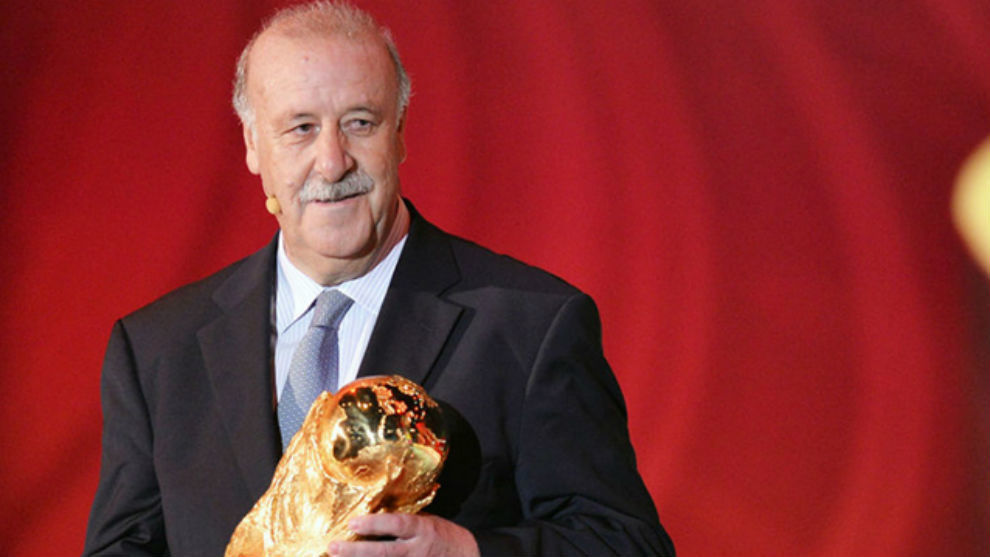 Del Bosque, after winning the World Cup in 2010. (Image Courtesy: Marca / Website)
Del Bosque, after winning the World Cup in 2010. (Image Courtesy: Marca / Website)
At the 2010 World Cup, under the helm of Del Bosque displayed the full force of the style for the first time which culminated in a World Cup win against Netherlands in the final.
In the final, Spain, as usual, held their high defensive line, which led to finding the Dutch players in an offside position very often while also keeping the possession for a long time which paid off in the second half of extra time.
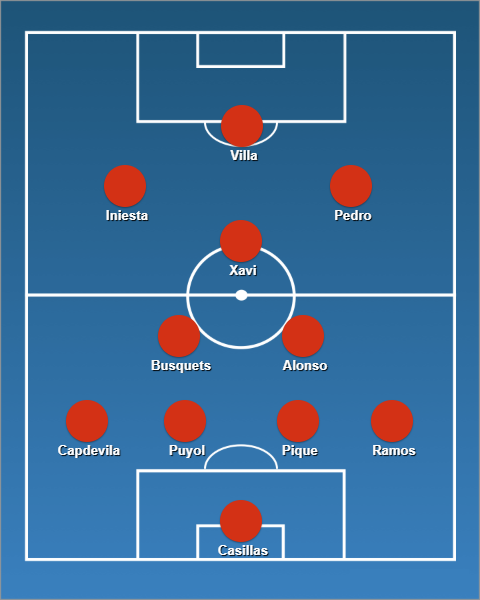 How Spain lined up in the final against Netherlands in 2010
How Spain lined up in the final against Netherlands in 2010
Del Bosque lined up with the quartet of Iniesta, Xavi, Busquets and Xabi Alonso in the midfield while also having 3 ball-playing centre backs in defence although Sergio Ramos played the whole tournament as a right-back.
But the extreme sense of Tika-Taka, which was visible during the Euros in 2012, bought in a negative undertone as the manager was criticised heavily for sacrificing forwards for midfielders to just having possession in the middle of the park.
In the final of the tournament, Del Bosque opted to start with six midfielders on the pitch and zero attackers. And his gamble paid off eventually as Spain romped home to a 4-0 victory against Italy in Kyiv.
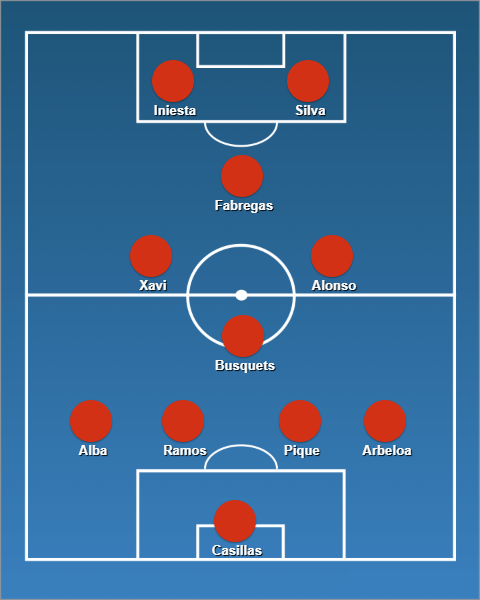 How Spain lined up in the final against Italy in 2012
How Spain lined up in the final against Italy in 2012
Spain ended the tournament with an average possession of 63% but only 1.8 goals per match, way lesser than the tournament average of 2.4 goals per match.
The present-day identity of the Spain national team under Luis Enrique, is much more direct than under the previous managers, as the former Barcelona manager employed the same approach he tried and tested at the Catalan club.
This included faster moving of the ball, reducing the number of passes while also having quick players on the wing so as to attack from counters when the requirement arises.
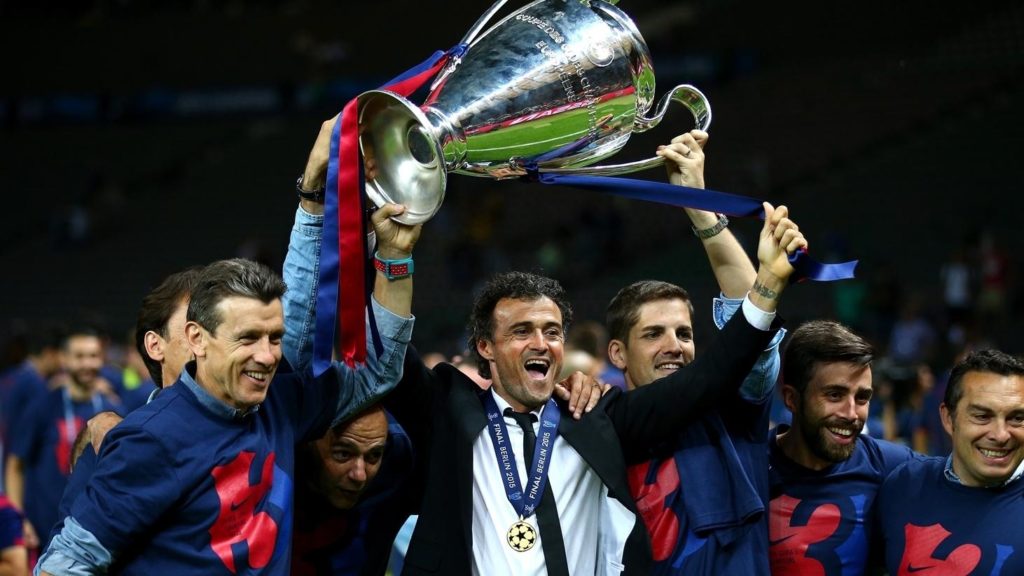 Enrique celebrating after winning the Champions League as the manager of Barcelona in 2015. (Image Courtesy: UEFA Champions League / Website)
Enrique celebrating after winning the Champions League as the manager of Barcelona in 2015. (Image Courtesy: UEFA Champions League / Website)
The debacle at the Euros in 2016 and the World Cup in 2018 led to the appointment of Enrique as the manager of La Roja as they look to return to the glory days that defined an entire era of modern football.

